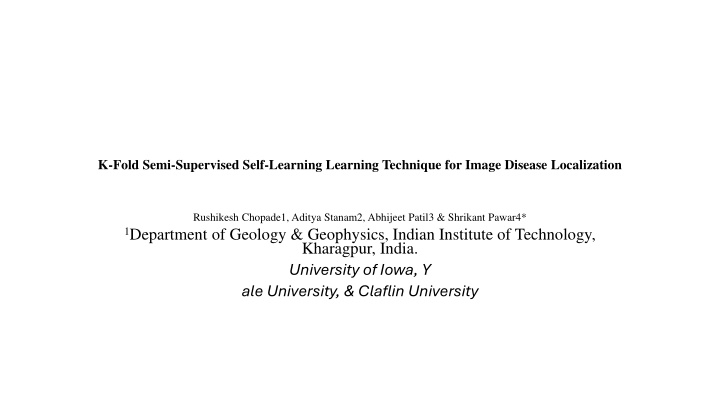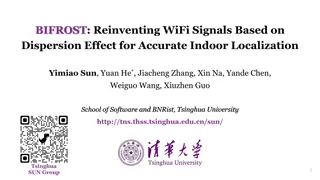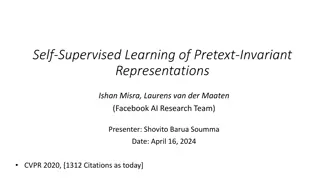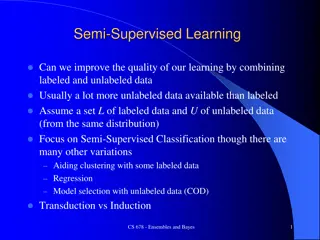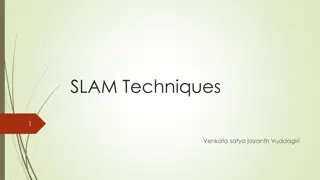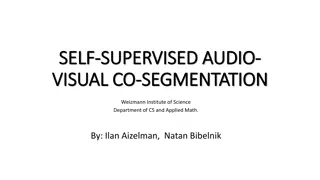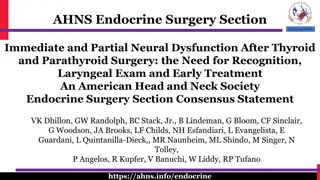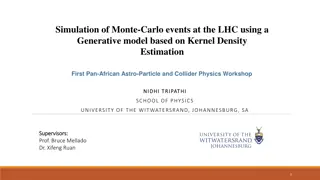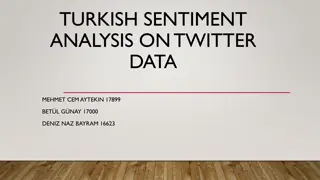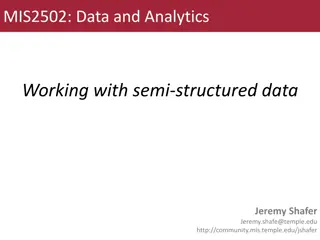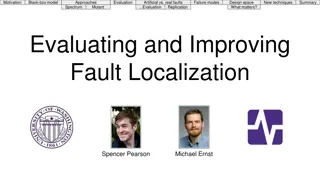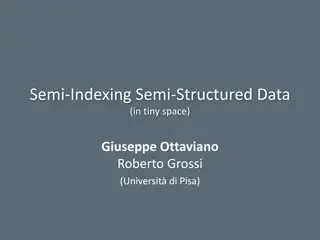Enhancing Image Disease Localization with K-Fold Semi-Supervised Self-Learning Technique
Utilizing a novel self-learning semi-supervised technique with k-fold iterative training for cardiomegaly localization from chest X-ray images showed significant improvement in validation loss and labeled dataset size. The model, based on a VGG-16 backbone, outperformed traditional methods, resulting in a 42-fold increase in labeled dataset size. The method demonstrates enhanced performance in training validation loss, labeling sizes, and overall labeling performance, offering a promising approach for image disease localization.
Download Presentation

Please find below an Image/Link to download the presentation.
The content on the website is provided AS IS for your information and personal use only. It may not be sold, licensed, or shared on other websites without obtaining consent from the author.If you encounter any issues during the download, it is possible that the publisher has removed the file from their server.
You are allowed to download the files provided on this website for personal or commercial use, subject to the condition that they are used lawfully. All files are the property of their respective owners.
The content on the website is provided AS IS for your information and personal use only. It may not be sold, licensed, or shared on other websites without obtaining consent from the author.
E N D
Presentation Transcript
K-Fold Semi-Supervised Self-Learning Learning Technique for Image Disease Localization Rushikesh Chopade1, Aditya Stanam2, Abhijeet Patil3 & Shrikant Pawar4* 1Department of Geology & Geophysics, Indian Institute of Technology, Kharagpur, India. University of Iowa, Y ale University, & Claflin University
The unlabeled data can be annotated with the help of semi-supervised learning (SSL) algorithms like self- learning SSL algorithms, graph-based SSL algorithms, or the low-density separations. In this article, we have applied a self-learning semi-supervised technique with k-fold iterative training mechanism to localize cardiomegaly from the chest X-ray images. The purpose of using the iterative training method instead of the traditional self-learning semi-supervised algorithm was to generate more labeled images, increase the robustness of the algorithm and induce faster learning. The model was trained over a single-shot detector bounding box algorithm with a VGG-16 backbone for predicting the bounding box coordinates. This method generates a significant improvement in validation loss with an increase in the labeled dataset size by around 42 times compared to the traditionally used self-learning semi-supervised technique trained for the same number of epochs.
A.Improvement in training validation loss: A significant improvement in the number of labeled images and validation loss was observed while using this technique. The validation loss after training for 160 epochs was observed to be 0.00108 in case of the K-fold self-learning semi-supervised algorithm, while the validation loss in the case of the traditional self-learning SSL algorithm was found to be 1.02548 after training for the same 160 epochs. B.Improvements in labeling sizes: The labeled image dataset grew to a size of 560 images from initially labeled 146 images when a 10-fold self learning SSL algorithm was used, while a total of only 156 images were found in the labeled dataset with traditional self-learning SSL. So, a total of 414 new images were labeled using the new technique, whereas only 10 new images were labeled using the conventional technique. C.Improvements in labeling performance: Aconfidence score threshold of 0.9 was chosen based on the results obtained from comparing the performance of SSL models with different confidence score thresholds. The number of labeled images was found to be 560 for 0.9 confidence score threshold, 481 for 0.8 confidence score threshold and 495 for 0.7 confidence score threshold respectively. This comparison of the labeled images obtained from the training of the 10-fold self-learning SSL algorithm for confidence scores of 0.7, 0.8 and 0.9 are presented in Figure 2.
A steep increase in the number of labeled images was observed in the first epoch and the number of added labeled images decreased as the epoch number increased for all three thresholds. The possible explanation for this observation is that the model starts to overfit when trained for higher epochs. As a result, the number of added new images decreases in the later epochs reaching a saturation stop. This overfitting issue can be dealt with by a bigger labeled dataset. While comparing the three confidence score thresholds (figure 2), the curve of 0.9 confidence score threshold outperforms the other two curves. Using the 0.9 confidence score, the labeled dataset is found to be around 4 times the original size in just 7 epochs. In conclusion, the K-fold self-learning semi-supervised learning technique was found to outperform the traditional self-learning semi-supervised technique with improved validation loss and more labeled images compared to the traditional technique. This analysis needs a replication on additional cardiomegaly labels, and can be applied to other labels (atelectasis, edema, emphysema, effusion, pneumonia, pneumothorax, mass, nodule, infiltration, fibrosis, pleural thickening, hernia, and consolidation) from NIH repository.
